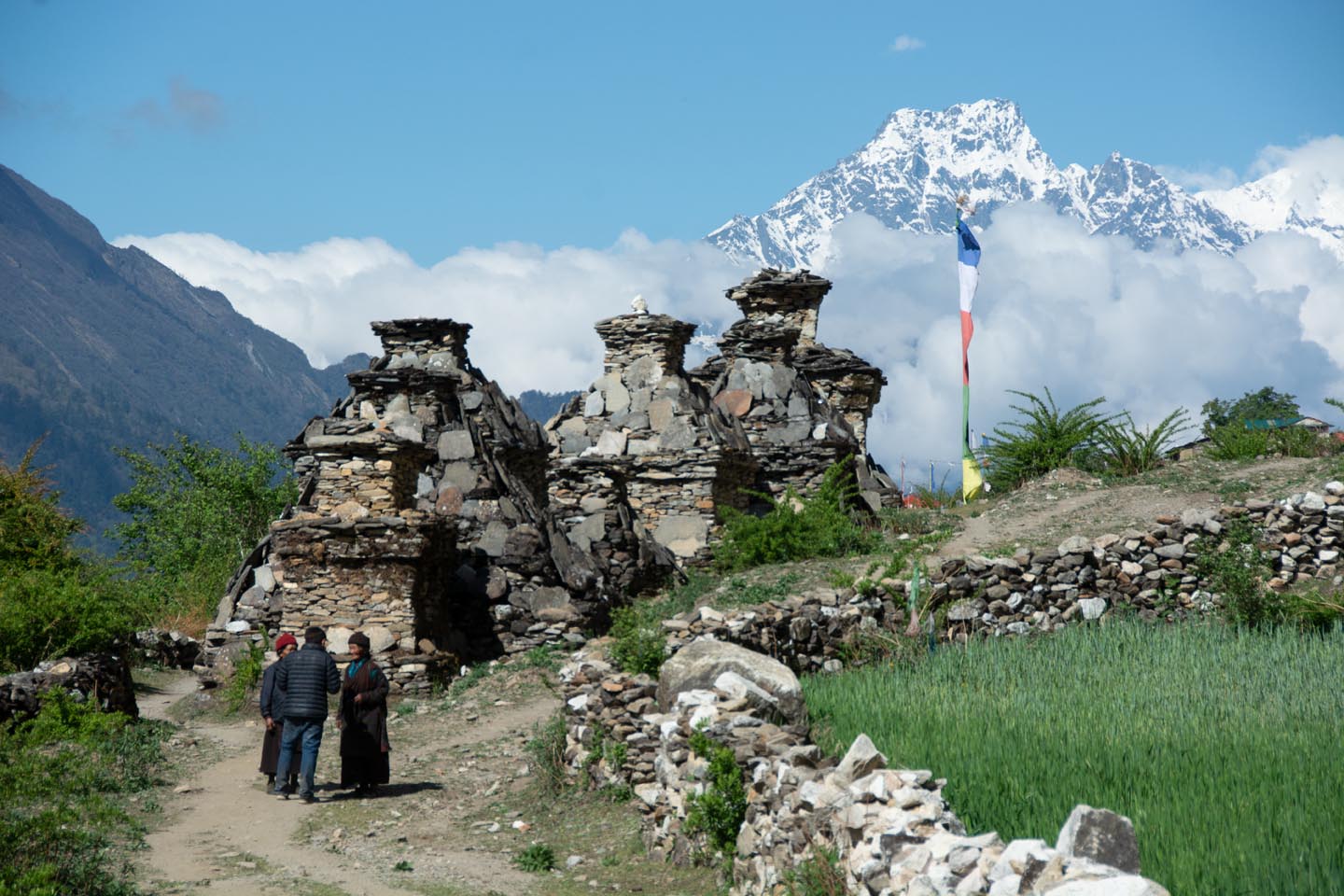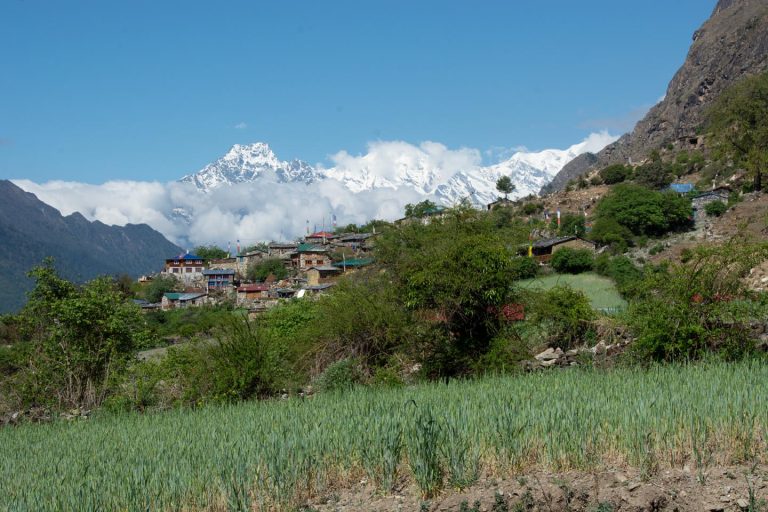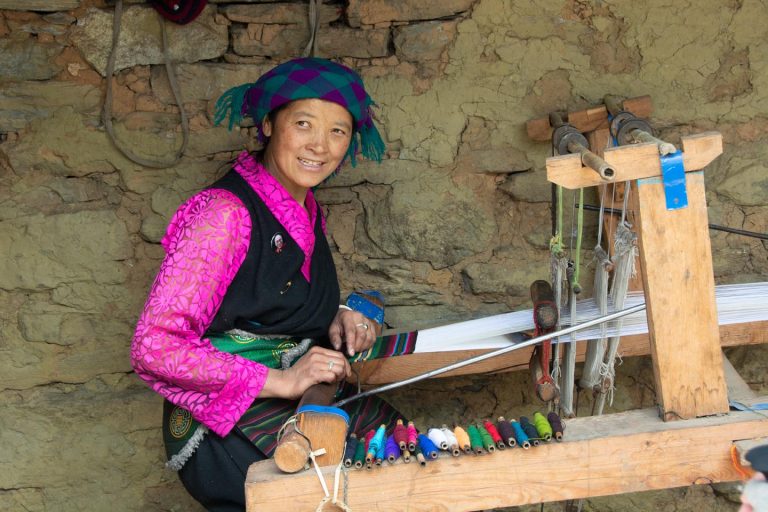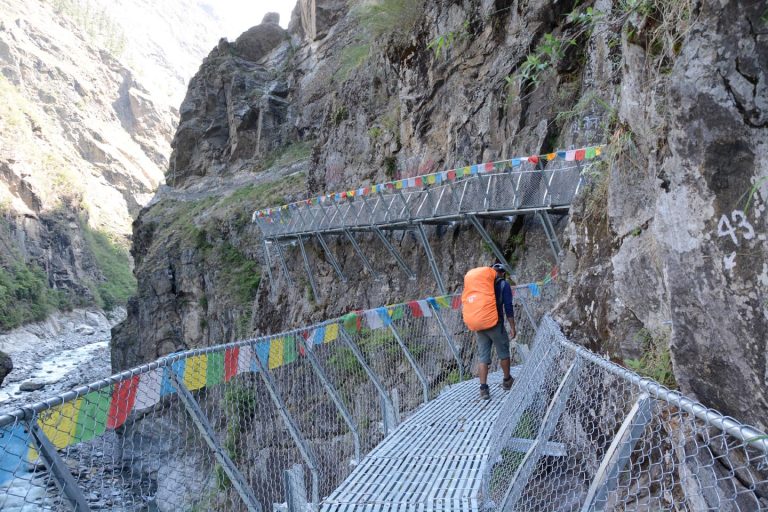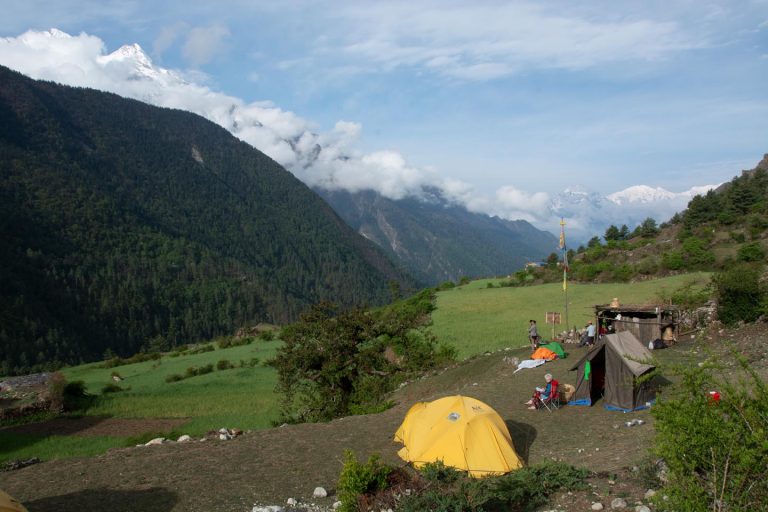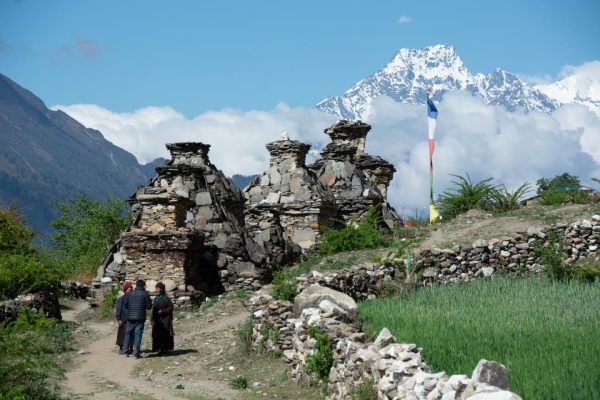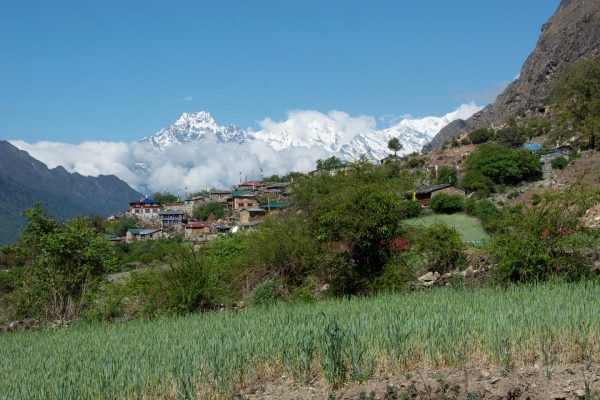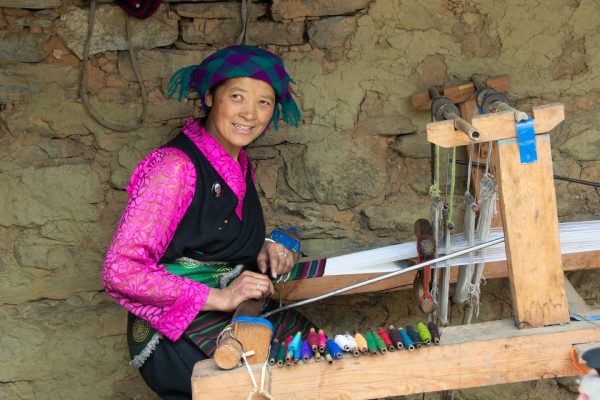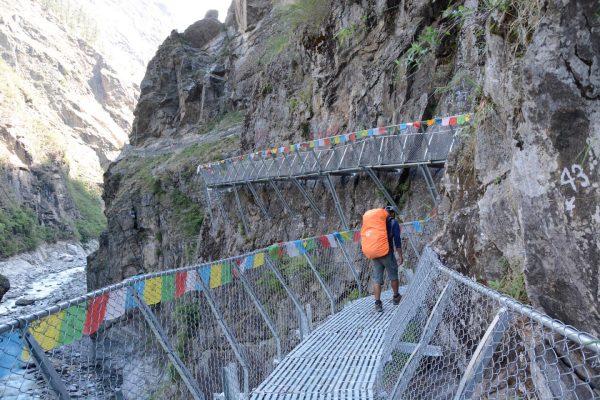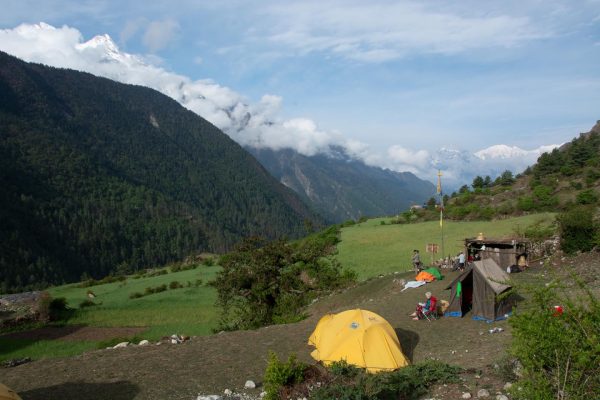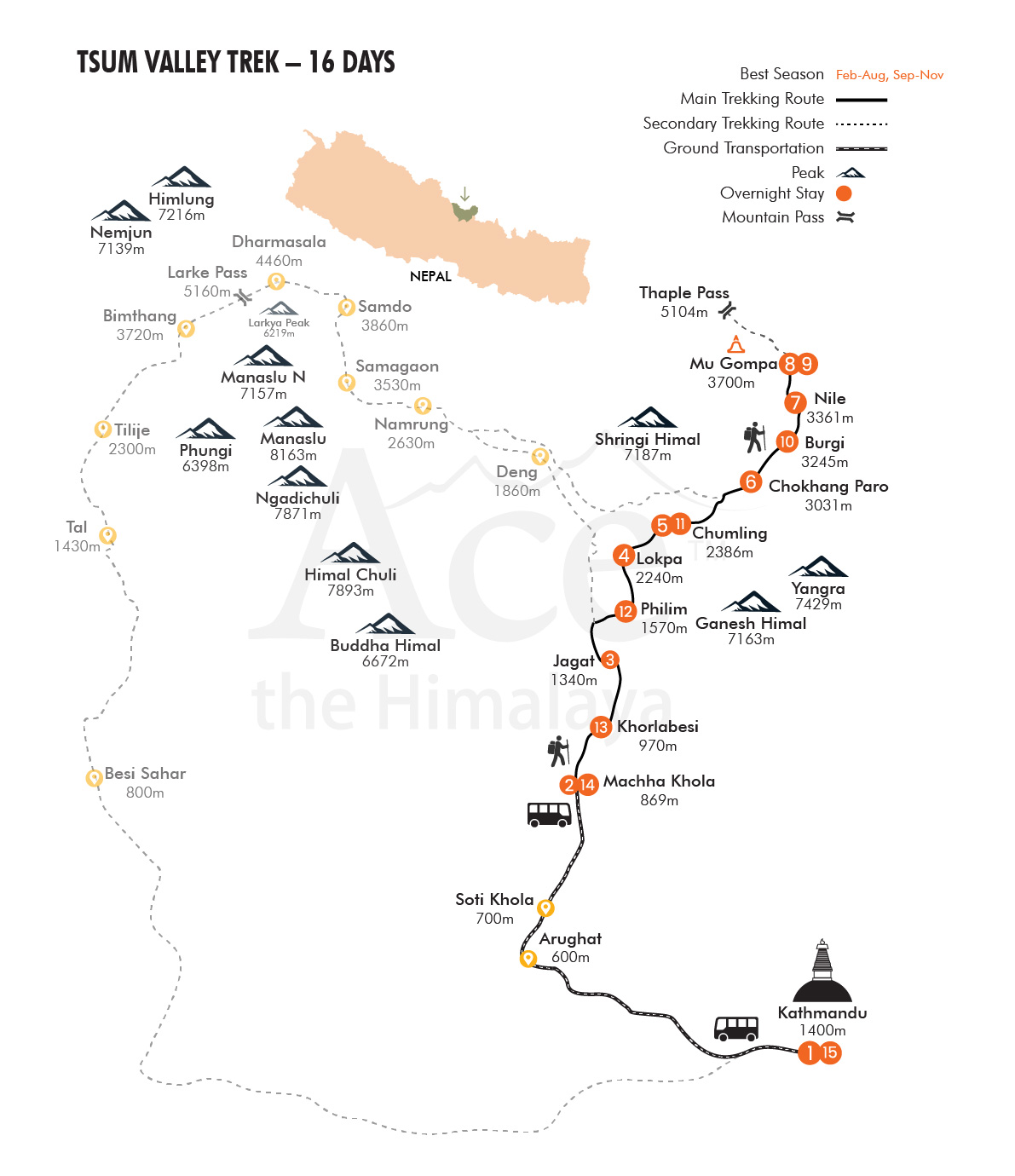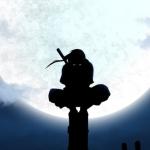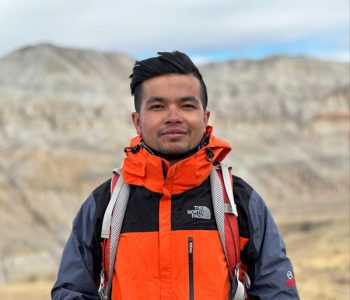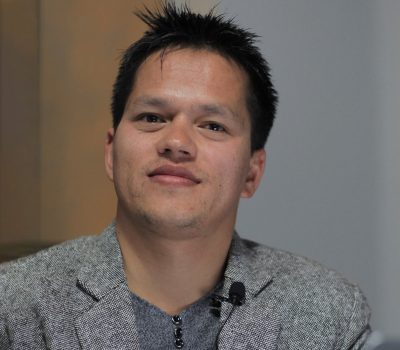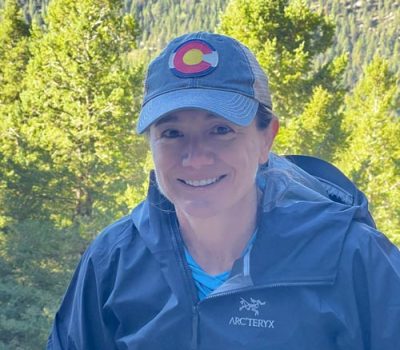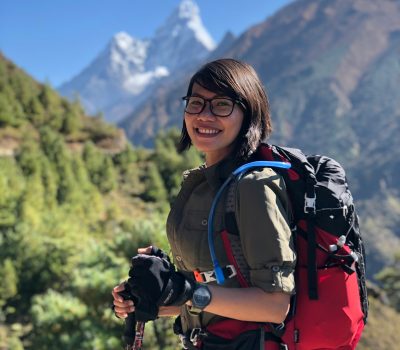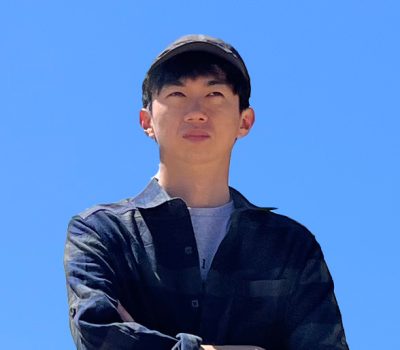Tsum Valley Trek - 16 Days
Explore the remote, mysterious region full of Tibetan culture, the majestic Himalayas, and the secluded Himalayan valleys through Tsum Valley Trek.
Tsum Valley Trek Highlights
- Scenic drive from Kathmandu to Machha Khola.
- Explore the Tibetan arid region.
- Explore the Buddhist Monasteries and Gompas throughout the trails.
- Witness the waterfalls along the way.
- Picturesque views of the Himalayas.
- Visit Mu Gompa, Rachen Gompa, Milarepa cave etc.
- Cross over Nepal 1st Cantilever Bridge.
- Discover the Tibetan and Buddhist lifestyle, culture, art, religion and many more.
Tsum Valley Trek Overview
The Tsum Valley Trek, situated in the northern expanse of Manaslu, remained restricted until 2008. Recently unveiled, the trekking paths unveil a pristine, unexplored realm that beckons adventurers. Once an integral part of Tibet, Tsum Valley Trek in Nepal reveals Tibetan influences in its religion, art, lifestyle, monasteries, and prayer flags.
This valley is completely different from all the trekking routes as one can find variation not only in lifestyle and culture but also in vegetation, geography, and landscapes. During the trek, a trekker can realize the sub-tropical region slowly changing into a semi-arid region, the change in climate, and the change in weather as well.
The trek to Tsum Valley begins with the drive towards Machha Khola. Machha Khola will be the starting point of our trek. Following the trail, we witness beautiful rhododendron forests, pine forests, conifer forests, and various waterfalls along the way.
The view of the Himalayas hides and seeks time and again throughout the trail. We also visit monasteries like Rachen Gompa, Mu Gompa, etc., and explore Tibetan culture and traditions.
Some of the mountains that can be witnessed during the trek include Ganesh Himal, Sringi Himal, and Boudha Himal ranges. This region is less exposed and thus is a less-touristy area which makes the trails unbeaten, the Gompas unexplored and the stories unheard.
Short Itinerary
Arrival at Tribhuvan International Airport in Kathmandu (1,400 m) and transfer to a hotel. Overnight at a hotel.
Drive to Machha Khola (869 m) from Kathmandu via Soti Khola (700 m) by Private Tourist vehicle – 9 to 10 hours. Overnight at a guesthouse.
Trek to Jagat (1,340) from Machha Khola – 6 to 7 hours. Overnight at a guesthouse.
Trek to Lokpa (2,240 m) from Jagat – 5 to 6 hours. Overnight at a guesthouse.
Trek to Chumling (2,386 m) from Lokpa – 6 to 7 hours. Overnight at a guesthouse.
Trek to Chhokhang Paro (3,031 m) from Chumling – 4 to 5 hours. Overnight at a guesthouse.
Trek to Nile (3,361 m) from Chhokhang Paro – 5 to 6 hours. Overnight at a guesthouse.
Trek to Mu Gompa (3,700 m) from Nile – 5 to 6 hours. Overnight at a guesthouse or Gompa.
Rest Day in Mu Gompa (3,700 m). Overnight at a guesthouse or Gompa.
Trek to Burgi village (3,245 m) from Mu Gompa via Milarepa cave – 5 to 6 hours. Overnight at a guesthouse.
Trek to Chumling (2,386 m) from Burgi village – 5 to 6 hours. Overnight at a guesthouse.
Trek to Philim (1,570 m) from Chumling – 6 to 7 hours. Overnight at a guesthouse.
Trek to Khorlabesi (970 m) from Philim – 6 to 7 hours. Overnight at a guesthouse.
Trek to Machha Khola (869 m) from Khorlabesi – 5 to 6 hours. Overnight at a guesthouse.
Drive to Kathmandu (1,400 m) from Machha Khola by Private Tourist vehicle – 9 to 10 hours. Overnight at a hotel.
Transfer to International Airport for Your Final Departure.
 Note
Note
Our standard itinerary might differ slightly due to unpredictable happenings and events out of our control. Factors such as flight cancellation/delay, unfavorable weather, natural calamities, newly implemented government rules, political affairs, trekkers’ health conditions, etc., are possible. Evaluating the situation’s possible solutions allow the trekking to resume as much as possible based on the best alternatives. In these times, we look for your cooperation and flexibility.
It is advised you arrive a day before the trip start date so you can rest and it also gives you time to buy clothing equipment and gear required for the trek. Also, it is best if you book your international flights with spare days in Nepal before and after your trek in case of any flight delays or cancellations due to technical reasons. Moreover, you have options to customize this trip where you can add on a sightseeing tour in Kathmandu, Pokhara, other adventure sports or day trips around the country before or after the trek.
Departures & Availability
Our groups are small with maximum 14 people. We create groups of independent travelers, friends and families which maintains close interpersonal connection, engage more and get into depth of the journey. Choose a date from the calendar to reserve your spot.
Our groups are small with maximum 14 people. We create groups of independent travelers, friends and families which maintains close interpersonal connection, engage more and get into depth of the journey. Choose a date from the calendar to reserve your spot.
We do not have fixed departure date for this trip. This trip can only be organized upon your request. There is an option of private and tailor-made journey best suited for you, your family and friends. We have price discounts according to the group size, the bigger your group, the bigger your group discounts. We allow complete flexibility on your departure date, please choose your preferable date.
Price Includes
Accommodation
- Twin-sharing/double accommodation in a 3-star hotel in Kathmandu for 2 nights including breakfast (Private room accommodation can be organized at an extra cost)
- Twin-sharing or dormitory guesthouse accommodation during the trek in the Annapurna region for 13 nights
Meals & Drinking Water
- All your standard meals during the trek (Breakfast, Lunch, and Dinner) including seasonal fruits
- A farewell dinner on the last night in Nepal
- Purified drinking water during the trek using water filter or water purification tablets.
Transportation
- All (international and domestic) airport transfers on a tourist vehicle
- Transportation from Kathmandu to Machha Khola and back to Kathmandu in a Private Tourist vehicle.
Guide and Staff
- Experienced, first-aid trained, government licensed, English speaking, and locally recruited Ace the Himalaya’s trekking guide (2 guides for group size more than 7 people)
- Porters during the trek for carrying luggage (1 porter for every 2 clients)
- Wages, accommodation, meals, gear, insurance, and medications for all staff
Permits
- Manaslu Conservation Area Permit (MCAP)
- TIMS (Trekkers’ Information Management System) card
- Restricted Area Permit (RAP) for trekking
Benefits and Takeaways
- 1 Ace the Himalaya’s duffel/kit bag, trekking map, sun hat, Buff (Neck Gaiter)
- Trip completion certificate
Administrative & Taxes
- All administrative expenses and government taxes
Price Excludes
- Meals (lunch and dinner) in Kathmandu
- International flight fare and airport departure tax
- Nepal Entry Visa (Visa can be acquired easily after your arrival at Tribhuvan International Airport in Kathmandu with a fee of USD 30 for 15 days visa, USD 50 for 30 days visa and USD 125 for 90 days visa)
- Travel insurance along with high-altitude emergency evacuation coverage
- Any beverages including bottled and boiled water
- Tips to trekking staff and driver
- Personal trekking gear and equipment
- Any expenses other than the Price Include section
Tsum Valley Trek Itinerary
Expand AllDay 01: Arrive at Tribhuvan International Airport in Kathmandu and transfer to a hotel
One of our officials will greet you at the Tribhuvan International Airport, Kathmandu, upon your arrival. We will take you to the hotel in our private tourist vehicle. Pre-trip meeting at the office with our trekking guide in the afternoon.
Note: If you happen to arrive after 4 pm you would be briefed about the trip by our guide, this will be the pre-trip meeting for you, so please make sure that you ask all the questions. But if you arrive earlier than 4 pm, your pre-trip meeting would be on that very day at our office.
During the meeting, we will introduce your trek leader/guide. For the meeting, please make sure you bring your passport, three copies of passport-size photos, and a readable copy of your travel insurance policy. During this meeting, please clear the due balance, if any, and sign the legally binding trip form as well as the non-liability disclaimer.
Day 02: Drive to Machha Khola from Kathmandu via Soti Khola by Private Tourist Vehicle
After the morning breakfast, we leave for Machha Khola, the starting point of our trek. From Kathmandu to Dhading Besi is a 3-hour comfortable drive on a concrete paved road. After this is a bumpy and winding dirt road to Machha Khola which takes from 5 to 7 hours depending on the traffic and road condition. The total drive for the day will approximately be 9 to 10 hours. The road to Machha Khola from Soti Khola was recently constructed and it isn’t paved in concrete. We will be sending a private 4WD vehicle for you and assigning an experienced driver.
Day 03: Trek to Jagat from Machha Khola
After crossing Machha River and Khorla besi, there is a hot spring called Tatopani. The trail follows a forest reaching Dovan, below which flows the massive Budi Gandaki. As the elevation increases, the rapids and the scenery undergoes a complete transformation.
Day 04: Trek to Lokpa from Jagat
The early morning trek makes us climb through a rocky ridge up to Salleri from where we descend down towards Sirdibas. The valley widens as the trail takes us to Ghatta khola and then upstream towards the Gurung village, Philim. Walking towards the northern direction through the forest, we reach Chisopani. Leaving Chisopani, we cross the gorge and walk for around half an hour only to arrive at the beautiful waterfall. We then walk into the pine and rhododendron forests, descend down the trail towards Tsum Valley to Lokpa.
Day 05: Trek to Chumling from Lokpa
Today is a tough day as the altitude increases and the trail is mostly an ascent too. The panoramic views of the Himalayas hides and seeks time and again throughout the trail. We walk down beautiful villages of Lungwa Khola and then ascend through pine forests to Gumlung. After crossing the Siyar Khola, we finally reach Chumling, the lower Tsum valley, famous for Chumling Gompa and the stone paved streets of the village.
Day 06: Trek to Chhokhang paro from Chumling
The trek starts with crossing the suspension bridge today. We walk on the other side and enjoying the views of Ganesh Himal walk towards Rainjam towards Serpu Khola. We cross one more bridge and head towards a village named Gho. We walk further 2 hours to finally walk to the upper Tsum valley and reach Chokhangparo.
Day 07: Trek to Nile from Chokhung paro
Today there is a strong rise in altitude and the ascent in the trail too. We walk past Lamagaon crossing suspension bridge towards Rachen Gompa, also known as Nunnery Gompa. After making a visit to the Gompa we return back on the trail. We pass through Shiar Khola, Lar, Phurbe and Pangdun village, many Buddhist monasteries, cross the final bridge before reaching Nile. There is a monastery at Chule nearby to Nile which can be visited after resting at Nile.
Day 08: Trek from Nile to Mu Gompa
The trail today takes us closer to the Tibetan border. We walk through the west bank of the valley through Tibetan landscapes. After walking for around 5 to 6 hours we finally reach Mu Gompa.
Day 9: Rest Day in Mu Gompa
Today we spend the day resting and exploring the Mu Gompa, the other Tibetan landscapes and the most remote area of this Tsum valley. Mu Gompa is the largest monastery in the region. After completing the exploration at Mu Gompa, we can also consider walking to the base of the Pika Himal (4,865 m).
Day 10: Trek to Burgi village from Mu Gompa via Milarepa cave
Today we walk back the trail to Chhule and Phurbe. On the east bank of Shiar Khola, we arrive at Burgi village. This village is small and beautiful. We climb up the Milarepa cave famous for the mesmerizing view of the Kipu Himal, Churke Himal and Poshyop glacier.
Day 11: Trek to Chumling from Burgi village
We walk back the trail enjoying the dense pine and rhododendron forests, descending down to Chokhangparo and then walking towards the lower Tsum Valley Chumling.
Day 12: Trek to Philim from Chumling
The walk today will be of 6 to 7 hours. Descending down to Lokpa, enjoying the gorgeous Samba Falls, we finally reach Philim.
Day 13: Trek to Khorlabesi from Philim
We walk down towards Sirdibas then to Jagat and further descend to Yaruphant. The Tibetan arid climate can be seen gradually changing over to the subtropical green vegetation. We continue descending down towards Dovan and finally reaching Tatopani. There is a hot water spring at Tatopani, if preferred one can take a dip into it to relax the tired muscles. We further walk down and finally reach Khorlabesi.
Day 14: Trek to Machha Khola from Khorlabesi
Both Khorlabesi and Machha Khola are in the banks of the Budhi Gandaki River. After hot breakfast, we will take the trail to Machha Khola. It’s mostly a decent today. We will walk on the side of the mountain with the roaring Budhi Gandaki below us, cross suspension bridges and finally arrive at Machha Khola, the end point of our trek.
Day 15: Drive to Kathmandu by Private tourist vehicle
We will be driving back to Kathmandu in the morning. The road in the beginning is newly built and isn’t paved in concrete. We will have a bumpy ride down until Dhading Besi. From then to Kathmandu, the drive will be in concrete road but it is still a mountain road, so the drive won’t be as smooth as in the cities. We will assign an experienced driver for your private transfer to Kathmandu.
If you are interested in extending the trip, there are many options such as Chitwan jungle safari, river rafting adventure, Kathmandu shopping tour, mountain biking and other activities.
In the evening, we host a farewell dinner in a fine restaurant. (Your guide(s) and an office staff will accompany you).
Day 16: Transfer to International Airport for Your Final Departure.
The trip ends, our Airport Representative will drop you to the Kathmandu International Airport for your final flight departure from Nepal.
Gears and Equipment
Here is a list of what you might want to pack for the Tsum Valley Trek. Please take this as a starting point. You’ll need layers of warmer clothing during the winter. We provide a 75 liter duffel bag for you to use for the trek. It will be given to you during your pre-trip meeting in Kathmandu. The duffle bag is yours to keep. Also, you can rent sleeping bag and down jacket with us at the additional fee of USD 35 for each once you are in Kathmandu.
General
- Four-season (zero degree) sleeping bag (We have rental sleeping bags available for an additional USD 35)
- Puffy down jacket (We have rental jackets available for an additional USD 35)
- Daypack (35-45 liters recommended) with rain cover
- Sleeping bag liner
Upper Body
- Sun hat or cap (We'll provide you with a free Ace the Himalaya baseball cap.)
- Knitted hat/Beanie
- Headlamp
- Sunglasses
Torso
- Technical fabric base layer (light for warmer months, heavy for colder months)
- Technical fabric short (2) and long sleeve (2) shirts
- Waterproof, windproof shell
- Fleece jacket or pullover
Lower Body
- Technical fabric base layer (light for warmer months, heavy for colder months)
- Hiking pants (2)
- Comfortable pants for inside the teahouses
- Waterproof, windproof shell
- Hiking shorts
Hands
- Wool or technical fabric liner gloves
- Hard-shell outer gloves (insulated for colder months)
Feet
- Wool or technical fabric warm socks
- Hiking socks
- Liner socks (optional such as silk)
- Trekking/hiking boots (waterproof recommended)
- Ice Cleats /Micro Spikes (For trekking from November to March, it's recommended to include Ice Cleats/ Micro Spikes to prevent slipping on icy or wet surfaces.)
- Casual shoes
- Gaiters (lightweight for dust or heavy for snow in colder months)
Undergarments
Note: The quantity of each article of clothing can be adjusted to suit the preferences of each participant.
- Technical fabric/quick drying is best for underwear (opportunities to launder during the trip)
- Sports bras (women)
- Pajamas or sleeping clothes
First Aid Kits and Medications
- (Note: Guides carry medications and first aid kits during the trip. However, personal kits and medications are highly recommended.)
- Sunscreen
- Lip balm
- ointment
Other Essentials
- Passport
- Extra copies of passport-sized photos
- Reusable water bottle
- Toiletry kits
- Water purification tablets or UV water purifier (if you plan to treat water)
- Hydration bladder
- Towel
- Pillowcase
- Toilet paper (2 rolls)
- High protein snacks (such as protein bars or nuts)
- Waterproof/dry bags for carrying important documents and money
- Airline tickets (Please leave a copy at our office in Kathmandu. This can be useful if there is a change in the date of the flight.)
- Earplugs
- Trekking poles
Optional
Once in Nepal, if you have the time, you can purchase supplies and gear for hiking. Thamel, Kathmandu’s tourist hub, is home to many shops where you can get a variety of reasonably priced trekking equipment.
- Power bank or extra batteries
- Cameras and mobile phone
- Cards/book
- Binoculars
- Whistle
- Thermos for hot water
Important Information
- We give you a free duffel bag and baseball cap during your pre-trip meeting in Kathmandu. The duffel bag will be used to pack your trekking supplies.
- For every two participants, we assign one porter. The duffel bag, which should weigh around10 kg/22 lbs, will be carried by the porter throughout the walk.
- To carry your daily necessities like cash, crucial papers, a water bottle or bladder, a camera, toiletries, sunscreen, a notebook, clothing, etc., you must have your own daypack (with a waterproof cover).
- You can store your luggage (non- trekking items) at the hotel in Kathmandu.
- Down jacket with a hood is a must for altitudes above 4,000 m to keep warm. You can rent a down jacket for USD 35. Please note that in case of loss or damage, you need to reimburse the cost of USD 200 per item.
- You can rent a 4-season sleeping bag for USD 35. Please note that in case of loss or damage, you need to reimburse the cost of USD 200 per item.
Note: Some clothing, especially form-fitting, figure-hugging items made of elastic material (like yoga pants), may offend locals. Therefore, if you choose to wear these clothes for comfort, please make sure to wear something over them.
Trip Video
FAQs for Tsum Valley Trek
General
Why trek with Ace the Himalaya?
Ace has a reputation for successfully leading treks with knowledgeable leaders and staff taking care of all your travel needs. We are a certified sustainable travel company that also endorses the idea of giving back to the community by participating in various philanthropic activities. Here are 17 reasons why you should choose Ace the Himalaya for your next adventure!
Is Nepal open to travelers following the Covid-19 pandemic?
Indeed, Nepal is entirely open. Travelers are welcome in Nepal without any restrictions. Arriving travelers can obtain a visa on arrival at the Kathmandu airport as well.
What are the conditions to travel to Nepal post Covid-19?
Traveling to Nepal is now hassle-free. You don’t need a vaccination certificate or negative PCR test, but check with your airlines and transit countries for any specific requirements.
We suggest you look at the Nepal immigration site https://www.immigration.gov.np for the most up-to-date information.
What additional documents do I need?
- Two passport-sized photos (2×2 inch) to give to our office staff
- A copy of your international flight ticket to give to our office staff
- A copy of travel insurance to give to our office staff
What permits are required for Tsum Valley trek?
For the Tsum Valley Trek, you’ll need two permits: Tsum Valley Restricted Area Permit (RAP) and Manaslu Conservation Area Project Permit (MCAP). These permits grant access to the captivating landscapes and cultural gems along the trail.
Do we book our own international flights to and from Nepal?
Yes, you need to book your own international flights. We are a local agent and it would cost you significantly higher to book through us. Please find more information in the International Flight page.
Is hiring a guide necessary even if I have trekking experience?
You can hike without a guide. A guide is there to assist you in going forward and making alternative plans and arrangements when unanticipated occurrences happen or when things get difficult. Our hiking leaders are qualified experts.
When talking about their trip, our guests frequently remark on how much fun they had and how crucial their guide was to make it successful.
Can the guide speak English?
Yes, our guides can speak English. Most of them start their careers as porters and work for 3 to 4 years before becoming trekking guides. Their English skills are based on real-world experience rather than formal education. While they are able to communicate effectively, please note that English is not their first language, so their fluency may not be on par with native speakers. They will also assist with communication, especially since many locals, like shopkeepers and teahouse hosts, may not speak English.
Weather and Temperature
What is the best season for Tsum Valley Trek?
Our trekking season extends from mid-September to May. From early September, the monsoonal rains decrease. By end of September to December, the weather is usually stable with mild to warm days, cold nights. February, March, April, May, June, October, November, December is the best time to do this trek.
What kind of weather and temperature can I expect while trekking?
Due to its tendency to be localized, the weather in the Manaslu region is challenging to forecast. You could see rain, fog, cold, or hot and sunny weather while trekking. It is best to be equipped to handle various weather situations. In the Manaslu region, nighttime temperatures are significantly lower than midday temperatures. In less than a day, the temperature can change from a high of 25°C (77°F) to a low of – 20°C (-4°F). The weather and temperature ranges are typically predictable based on the month and season, even though it might be challenging to predict what each day in the mountains will bring.
Spring – March/April/May/June
Despite being the busiest season, spring is perhaps the best time to visit the Manaslu region. The many varieties of blossoming trees should be visible, and the sky should be clear with stunning vistas. During springtime, the average temperature is 20°C (68°F), with a high of 25°C (77°F) during clear days and a low of – 0°C (32°F) overnight above 2500 meters.
Monsoon season – July/August through Mid-September
This season is not really recommended to travel as it rains in the lower altitudes. There are positive sides to trekking during the monsoon months as the excess rainfall can provide ample chance to see spectacular views of the waterfall and it’s also the best season to avoid the crowds.
During this time, the average temperature is 25degrees C (77 Degrees F), with a maximum of 30 degrees C (86 Degrees F), during sunny days and a minimum of 5 degrees C (41 Degrees F), in the morning and at night for areas above 2500 meters.
Autumn – End of September/October/November
In the Manaslu region, autumn is equally as busy as spring. It is one of the best times to go, too. While the plants and trees are not in bloom, the sky is often clear, offering breathtaking vistas from almost every viewpoint. The average temperature in autumn is 20°C (68°F), with a high of 25°C (77°F) during clear days and a low of – 5°C (23°F) overnight above 2500 meters.
Winter – December/January/February
Due to fewer tourists, some people like winter travel. Even while the views are still beautiful, it can be cloudy, thus adding extra days is highly advised during this time. The average temperature is 10°C (50°F), with a high of 17°C (62.6°F) during clear days and a low of -10°C (14°F) overnight above 2500 meters. The teahouses provide extra blankets for warmth at night.
What is the temperature rating of the sleeping bag that you lend to trekkers?
The temperature rating of the sleeping bags that we rent to trekkers is about -10°C (14°F). Also, our guides can obtain extra blankets if needed at the teahouses.
Arrival and Visas
Is it possible to obtain a visa for Nepal upon arrival at the airport?
Yes, you can obtain a Nepal visa upon your arrival at the airport. There are kiosks in the arrival hall that you use to complete the necessary forms. The cost is USD 30 for a 15-day tourist visa, including numerous entries, or USD 50 and USD 125 for a 30-day or 90-day tourist visa including numerous entries respectively. You should carry cash (USD) with you to pay your visa fees quickly and easily, as digital payments are frequently unavailable.
To save time, we recommend filling out the online visa application form in advance. Applying online 2 weeks before your arrival will expedite the process at the airport. For detailed guidelines, please refer to our blog titled Guidelines for Online Tourist Visa Form in Nepal.
Who will come to pick me up at the airport upon my arrival?
Our staff will be waiting for you outside the airport terminal with our signboard (Ace the Himalaya). You will be accompanied to a hotel in a private tourist vehicle.
Payments and Extra Costs
How much additional money do I need per day?
Typically, USD 15 to 20 per person per day will be sufficient. This is to purchase water, tea/espresso, snacks, and hot showers in the mountains and for lunch or dinner in Kathmandu. Additionally, if you want to buy souvenirs or native Nepali goods, you can bring extra cash with you.
Is it possible to use credit cards in the places I visit during the trek?
In Kathmandu, yes – to some extent. Once you are out of the cities, all you need is cash. Please change the currency to local Nepali Rupees before you go to the mountains.
Is it possible to reserve a trip now and pay a deposit later, or do I have to pay a deposit at booking/reservation?
When you book, you must pay a 30% deposit to secure your itinerary. The remaining balance can be paid upon your arrival at Kathmandu or before arrival. US Dollars cash and credit cards (Visa, Master, and American Express) are accepted once in Nepal. Please note a 4% transaction fee will be added for all credit card transactions.
How do I pay the remainder of my balance upon arrival in Kathmandu? US Dollars cash or credit card?
You can make payments via US Dollars cash or credit card (Visa, Master, and American Express). A 4% transaction fee is added if paying with a credit card. Thus, we encourage you to pay with USD cash if you are planning to pay upon your arrival in Kathmandu.
We prefer you pay with larger bills (USD 50 or 100). Please note that the cash should not be older than 2009 and in good condition, as banks do not accept worn, torn, or crumpled bills.
How are the ATM and money exchange facilities in Kathmandu?
There are ATM and money exchange facilities almost every few meters in Thamel, where you will be staying in Kathmandu. So, you can easily use your cards to cash out limited sum of money to which a minimum charge is deducted by the ATM facility itself. You can easily exchange your foreign currencies in currency exchange centers for an exact rate.
Who Can Trek?
Do I need prior trekking experience?
Previous trekking experience is not required if you are physically healthy and have enough enthusiasm for the trek.
Are there any age requirements for mountain trekking?
Our treks have no age restrictions if members are healthy and willing. We have had families with kids as young as 5 years do the treks along this region, and our oldest adventurers have been in their late 70s.
Is trekking to mountain regions safe for solo female travelers?
It is safe for a female to trek alone in Nepal. Nepal is usually regarded as a safe nation for female visitors traveling alone. It is entirely safe for a solo woman to trek with Ace the Himalaya on any of our treks.
Physical Fitness
How challenging is the Tsum Valley trek?
Trekking in the Manaslu region is somewhat challenging due to the altitude and long duration of the trek. It is a strenuous journey that comprises walking 5 to 8 hours a day.
How quickly do you walk on the trail?
The average walking speed for a reasonably fit person is 4 kilometers per hour. At higher elevations, it is highly recommended that you walk slowly to help with acclimatization.
What kind of physical training is necessary for trek preparation?
For trekking, you must prepare your body to walk over uneven, hilly landscapes while carrying a backpack. Walking at an incline, jogging, cycling, and going for long-distance hikes are all good ways to exercise. You should work out for at least one hour four to five times a week for at least two months before trekking.
What are the physical standards that I need for the trek?
Participants in good physical condition should be able to complete this trek. If you are not physically active, we advise starting an exercise regimen two months before the trek that includes at least an hour of walking at an incline, running, or biking four to five times a week.
Incorporating hiking into your workouts is ideal. It is advised to speak with a doctor before making travel arrangements if you have any health conditions that could affect your ability to complete the trek.
Trek Preparation and Packing
What are the procedures after I make my deposit?
After making the deposit, one of our staff will email you for further information. We will require a copy of your passport photo page and your arrival/departure flight details. We will also provide you with additional trip information.
What sort of insurance do I need? How can I obtain a policy?
Travel insurance is mandatory for our hiking itineraries. We require your policy have medical evacuation coverage for the maximum elevation of your itinerary. Insurance may also cover additional costs in the event of a flight delay or cancellation caused by bad weather, medical costs, theft, loss, and damage to your items while traveling.
Travel insurance can be obtained online by one of several travel insurance companies. Please note that insurance obtained from an airline at the time of booking your flight may not cover medical evacuation coverage.
What are the necessary items that I should pack for my trip?
You can find the necessary items to pack for the trek here on the Equipment section. Gear and equipment can be bought or rented upon your arrival in Kathmandu. If you plan on buying or renting gear in Kathmandu, please allow extra time.
Will there be a place to store items/clothing not required for the trek?
The hotel in Kathmandu does provide free storage services. So, you can leave all your items that are not required for the trekking at your hotel.
Do you provide sleeping bags or down jackets for rent?
Yes, we do provide sleeping bags or down jackets for rental costs of USD 35 each. Do let us know before initiating the trek and we shall provide items. You can view the photos of the gear at this link: Photos of the Gear.
What type of bag will the porters carry?
We provide you with a free duffel bag of 70 to 80-liter capacity that our porters will carry. The maximum weight that porters can safely carry is 30kg, and each porter is assigned to two people.
However, each porter carries a maximum of 25 kg/55 lbs in total during the trek period. Your duffel bag, which should weigh no more than 12.5 kg/27.56 lbs per client, will be carried by the porter throughout the trek.
Do you use porters on the trek or do we carry all of our own gear?
Whilst on the trek, our porter will take care of your luggage. All you need to carry is your small day bag for your personal belongings like camera, water bottle, sun cream etc.
What type of daypack should I bring?
We suggest a 30 to 40-liter capacity daypack. Wider straps and hip belts are recommended to assist you in carrying weight evenly and reduce pain.
What about my passport, medications, and belongings?
Bring copies of your passport, insurance papers, and other essential items in your carry-on during your flight. If you need to take medications daily, keep them in your daypack with your other essential possessions. You can store other non-trekking essentials in the office of Ace the Himalaya or at the hotel in Kathmandu.
Accommodation
What kind of lodging is available in Kathmandu and on the trek?
In Kathmandu we use three-star hotels including breakfast. We use Hotel Thamel House, Gaju Suite Hotel, Hotel Jampa, or comparable-class lodging in Kathmandu. Teahouses with clean rooms are used during the trek.
Since the trekking route in this area has recently opened, the guesthouse or the lodge provides basic twin-sharing accommodation only. Likewise, at Mu Gompa, the accommodation might be in a Gompa (monastery) as well.
In contrast, we can also offer you, Ace, the Himalaya sleeping bags if needed (to be returned after the trip) but it is a good idea to always have your own sleeping equipment.
Is it possible to have private rooms while trekking or while in Kathmandu?
A private room in the teahouses cannot be guaranteed during peak season. During the non-peak season, the teahouses may provide a private room without any additional cost. The accommodation during the trek will remain very basic with twin sharing rooms and occasionally dormitory rooms for our trekkers.
We can arrange for a private room while in Kathmandu for an additional cost of USD 35 per room per night.
What happens if I end up staying an extra night/s in Kathmandu due to an unforeseen delay or cancelation?
In case of unforeseen circumstances such as flight cancellation, your health, or for any reason you decide to discontinue the trip and arrive early in Kathmandu then you will need extra accommodations in Kathmandu.
The cost of the teahouses in the mountains is not equivalent to the cost of a hotel in Kathmandu. In such cases, we will arrange your accommodations, but you will need to pay a supplemental charge.
Is it necessary to bring toilet paper for the trek?
You can buy toilet paper in the guesthouses during the trek, but it can be expensive, so we suggest you bring some with you. You also need to bring personal items such as towels, soap, hand sanitizers, and so on.
Are the guesthouses heated?
The guesthouse does not facilitate with heater or air conditioner. However, as it gets colder above 2,500m, they do have the facility of hitting the dining area by providing kerosene or a metal heater. USD 1 to USD 3 per person would be applicable to use this service and this is payable directly to the guesthouse.
Are there restrooms along the trail?
There are toilet facilities in the teahouses/lodges during the trek. Trekkers can also find private areas along the trail for emergencies.
What sort of food can I expect in trekking?
There are whole lots of good restaurants in Kathmandu where you can find any delight of your choice. During your stay in Kathmandu, please note that this package doesn’t include any meals except for breakfast.
The guesthouses during the trek may cook a delicious range of mostly vegetarian fare. On the trekking routes, there aren’t much facility of varied food items but serve only dal (lentils) – bhat (rice) along with vegetable curries.
Each day dinner and breakfast will be at a lodge you’ll stay at while for the lunch you would be stopping by on the way where you can order your meals as per your choice. Guide will help you to stop by at best possible places to eat.
I'm a vegetarian. Is that a problem?
Most of the teahouses in the mountains offer vegetarian meals. So, being a vegetarian is not a problem. Vegetarian meals are preferable to avoid food poisoning and indigestion.
Is the water okay to drink? Do I need to bring purifying tablets or filters?
Natural spring water or tap water can be found along the trek and in guesthouses but must be treated. We use Katadyn filters or water purification tablets to purify the natural water sources to make them safe to drink. This way, it is sustainable and pocket friendly as you need not buy bottled mineral water. You must carry a water bottle that can hold both hot and cold water and a hydration pack.
If the temperature drops too low for the Katadyn filter to function properly or if any technical issues occur, it is recommended to buy boiled water from the teahouse to ensure safe drinking water as an alternative.
Can we get hot or boiled drinking water? Does it cost extra?
Yes, teahouses do provide hot boiled water for an extra charge of USD 2 to 5 per liter. The cost varies and increases at higher altitudes.
Can I shower/bathe during the trek?
Depending on the location, it will cost an additional USD 5 to USD 8 for each shower during the trip.
Can I charge my electronic equipment during the trek?
These facilities will be available only in lower altitude. As the altitude increases, facility of charging digital cameras or any other equipment’s is not possible. While charging your equipment’s in lower altitude you will have to pay some service charges. Remember to bring TWO and THREE pin travel adapters! Please bring the spare batteries.
Are there any laundry services available on the Trek?
There is a possibility that you can wash your clothes yourself during acclimatization days whereas some teahouses might or might not wash your clothes. However, we recommend you pack enough clothes for your trek and not rely on laundry services.
Health and Safety
Do your guides have the trekking guide certificates from the Hotel Management and Tourism Center? Have they received first aid training for high altitudes?
We provide licensed trekking guides with fluent English. Our guides are certified by the Hotel Management and Tourism Center after receiving 45 days of training. Similarly, the guides receive high-altitude training from Kathmandu Environmental Education Project (KEEP).
What are safety measures in place? What safety equipment do your guides carry on the trek to deal with sickness/accidents?
Our guides are well trained and certified in first aid. Throughout the journey, our guides will evaluate your condition and your oxygen level using an oximeter. Our head office receives continuous updates on your condition and location through the guides. In places without a phone signal, your situation will be updated through a satellite phone during emergencies.
How do you allocate guides and porters in a group?
We allocate one guide for groups of up to 8 participants. For groups of over 8 participants, we allot an associate guide. As per the size of the group, we may add more guides or divide them into sub-groups.
We provide one porter for every two clients. Two clients’ duffel bags will be carried by one porter. The weight limit is 25 kg (55 lbs) or 12.5 kg (27.56 lbs) for each client. For an additional cost, we can arrange for one porter to carry one participant’s duffel.
Is Ace the Himalaya's staff insured?
Our company insures all our trekking staff members, including guides, cooks, Sherpa, and porters. Please browse through our legal docment page to view insurance details.
What vaccinations will I need?
While no vaccinations are strictly mandatory for travel to Nepal, it is highly advisable to take precautionary measures to protect your health. To ensure a safe and enjoyable trip, we recommend the following vaccinations: Routine Vaccines, Malaria, Japanese Encephalitis, Hepatitis A, Hepatitis B, Typhoid, Rabies, Cholera, etc.
It is also helpful if you inform us of any medical condition that is relevant so we may convey this information in the event of an emergency. Ace the Himalaya keeps your medical condition confidential unless treatment is necessary.
What if I am very sick in the mountain?
Our guides are 24 hours available for the services during the trek. They are trained to use first aid kit and have knowledge to use Oxy meter. They are very much aware that higher the altitude the oxygen level gets lesser so to get updated on the oxygen level of our client and to know whether they are fit enough or needs extra precautions to continue.
Guides carry local sim cards both Nepal Telecom and Ncell in order to update whereabouts and situation of our every client. During the time of emergency our guides are alert and keeps updated to head office in Kathmandu that is available 24 /7 to arranging from horse to mules or helicopters in the must needed cases especially when client is seriously sick in the mountain and needed to be hospitalized.
If I am sick, can I continue the trek after a day's rest?
The continuation of the trek depends upon your health condition. If you suffer from altitude sickness, you need to go down to a lower altitude. It takes several days to a week to recover. In group trekking, you need to discuss with your guide if you can re-connect with your group. However, you’ll be bound by time. If you are on a private trek and have extra time, the trek might be able to continue.
Do you guys have a PAC (Portable Altitude Chamber)?
Yes, we have access to a portable altitude chamber in case of an emergency. It is not essential to carry during the trek. Though, we can use arrange it upon request for an extra cost of USD 200.
How are acclimatization and altitude related?
Altitude sickness is a possibility during the trek. Air at higher elevations has less oxygen available. To avoid altitude sickness, acclimatization days and slow climbs are recommended at higher elevations. Along the trek, you’ll be assisted by our professional guides in recognizing and preventing altitude sickness.
What kind of trekking boot would be best for the trek?
An important piece of equipment is your trekking boots. Invest in a durable and comfortable pair, preferably with water-proof lining. Boots that provide ankle support on rough ground and have stiff soles are recommended.
What is necessary for sun protection during the trek?
Even when the sun isn’t shining, sun protection is essential. UV rays are reflected by the snow and the harshness of the sun will damage your skin before you notice it at high elevations. Therefore, proper clothing and sunblock are necessary. Hat, sunscreen, sunglasses, clothes, etc. are vital for sun protection.
Practical Matters
What is your cancellation policy?
Notice should be provided 20 days before the trip start date in case of cancellation. The trip can be canceled for justifiable reasons. Once the trip is canceled, a fee of 30% of the trip cost is retained for administrative costs.
However, the trip amount is entirely non-refundable if the cancellation is not made before the 20 days as per our terms and conditions. For submitting a claim to your insurance company after the cancellation, we can assist with documentation such as a receipt of monies paid. Refund will not be provided for unused accommodation in case of trip cancellation caused by personal reasons/sickness/weather.
More information about our cancellation policy can be found here in Terms and Conditions page.
Do I need to tip my guide and porter? How much would that be?
Tipping is both expected and appreciated, and it reflects your satisfaction and enjoyment of the trek. We recommend tipping based on the number of participants in your trekking group and the duration of the trek. As a general guideline, consider allocating at least 10% of your total trek cost for tipping. Detailed tipping recommendations for your guides and porters will be provided during our pre-trip briefing in Kathmandu.
Is there any communication while we are trekking?
Yes. The guides carry local cell phones, so you can use their cell phones if necessary and reimburse them. Assuming you have brought your cell phone, you can obtain a local SIM card and use it. Our guides or representatives can help you get a local SIM card after your arrival. There is the availability of Wi-Fi at most teahouses for an additional cost. We utilize satellite telephones for emergencies.
Does it cost an extra amount if I am a solo traveler?
If you are a solo traveler and book one of our published dates, there is no additional fee. If you sign up for a private trip or change the trip date from one of our published trip dates, you will be charged an additional fee.
Is there a provision for a refund policy if I don't accomplish the trek?
Trekkers occasionally fail to complete the journey for medical or personal reasons. In this situation, be aware that we do not issue any refunds for products purchased or unused trek days. We must pay our administration staffs, guides, and porters, purchase trekking permits, and all other booked accommodations in advance, so our expenses remain the same.
Who else will be joining my trekking group?
If there are any, you will be allocated to a trekking group. The details of the personal data of your group members cannot be disclosed. However, feel free to contact us if you have queries about other trekkers in the group and we shall give you a general idea of the ages, nationality, and sex of your group members. Chances are you will be trekking with others unless you have booked a private trip.
Can I add extra days to my trekking trip?
You can extend your trekking trip for an additional cost. Potential arrangements will be made if we get a request from your guide. This is applicable for private or solo trips as the itinerary can be easily adjusted. The addition of extra days is bound by time when you are in a group. Therefore, discuss with your group and guide, what changes can possibly be made.
I want to extend my holiday, any recommendations?
Yes, you can extend your holiday. Ace the Himalaya offers many options and alternatives for your holiday extension. For more information, you can visit our Day trips pages.
Transportation and Flights
Do I need to book my international flights for the travel to Nepal?
Yes, you must book your international flights. We are a local agency and do not make international flight arrangements. You can easily browse through flight tickets in airlines sites to book ones most feasible for you.
What form of transportation do you use?
Ace the Himalaya is all about providing you with local insights, lifestyle as well as adventure. Depending on the nature of the travel, the transportation to and from the destination varies from vehicular transportation to piggyback rides on mules and yaks.
The transportation from Kathmandu to Machha Khola and back to Kathmandu is by private tourist vehicle. The road isn’t paved in concrete in many sections. It’ll be a bumpy and challenging ride. We will provide an experienced driver for the two drives.
Traveler Reviews
These full and frank reviews are from travelers who have traveled with Ace the Himalaya previously. The reviews and experiences shown here are from reputable travel websites like TripAdvisor & Google.
 Google Reviews
Google Reviews
What makes this trip different ?
Our CSI with Sambhav Nepal
- Ace the Himalaya believes in giving back to the communities that surround and support tourism in Nepal. Ace provides logistical support and, if needed, cash donations to the projects of Sambhav Nepal (a local NGO).
- Sambhav Nepal and Ace work together to plan volunteer programs that will bring in foreign volunteers and make use of their enthusiasm, time, and talents in a variety of projects.
Sustainability and Responsible Tourism
- Of the few Travelife Certified companies in Nepal, Ace the Himalaya is one. We respect the procedures for sustainable tourism. Our excursions are socially and environmentally conscious, leaving the lowest possible impact in the Himalayas.
- About 80% of Ace the Himalaya’s staff members are natives of the regions where our trips are organized. It is one of our sustainable and responsible efforts to help local communities, support small businesses, and promote regional culture and way of life.
